One of the most important tools that any smart survivalist has plenty of is a knife. Their applications are endless, and their affordability makes them something that no prepper should ever do without. If you think about any scenario in which you have to fend for yourself, particularly in the wilderness, you can see where life would be made considerably more difficult without a strong, sharp cutting tool.
Not only should you have a few in your bug out bags and vehicles, but a small, simple knife should always be a part of your EDC, or Every Day Carry. These are the basic items that you should have on your person at all times, every day.
The idea is that if you’re ever stranded away from your vehicle, or even just in a compromising situation on a short walk, you have the basic essentials to protect and identify yourself with.
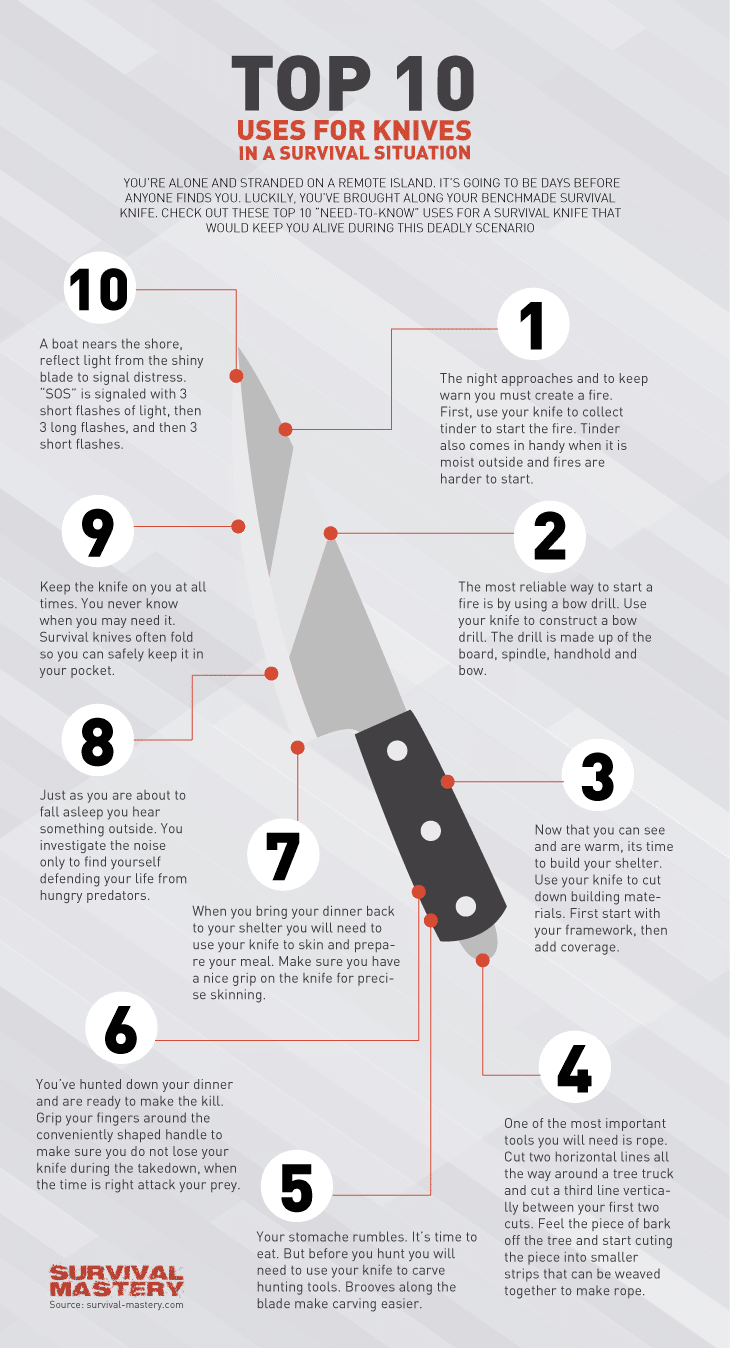
No matter who you are and no matter where you live, you should always have some sort of knife on you. Get into the habit of setting it next to your other EDC items, and putting one in your pocket or purse every time you leave the house. For such situations, you should consider an EDC knife, which is designed specially to fit in small packages. We have a great article with reviews on the best EDC knife you should check out if you’re interested.
I can’t tell you how many times I’ve used mine, and sure, it may not be a life or death situation, but it sure does help to be prepared to do anything from opening a box to defending yourself.
Determining your needs
Before you go too crazy and start buying all those cool knives you see in the outdoors stores, take a step back and evaluate exactly what you’re going to be doing with it the most.
There are many different styles and materials, and depending on what you need one for, you can be very limited by the type of blade you choose. Still, a well-prepared supplier like theknifeconnection store will help you find what you’re looking for.
Here are a few things you want to look at before making a purchase:
- Material: What is the knife made of? Is it something that is going to rust? Is it strong enough for whatever you’re going to put it through? Don’t forget about the handle too. You’ll want to make sure that the handle can be removed and replaced if it’s a good quality blade worth hanging onto. Plastic can be hard on your hands, and of course isn’t very sturdy, but usually these are the cheapest knives.
Wood is great, and is always really beautiful, but doesn’t last forever, and is susceptible to water and temperature damage. Steel or metal handles that are integrated into the blade can be extremely durable, but difficult to replace. There are even a lot of natural handles out there made out of various stones, and even bone and antler. Consider the use for the knife, and what it will be doing the most, and evaluate what material will best meet those needs. - Blade style: To further complicate your survival knife shopping, there’s the aspect of blade style. Depending on the purpose of the blade, you’ll want to select one that is either specifically compatible for its intended use, or a multipurpose knife that you can use on a variety of tasks. Here are a few common blade styles, and what they do.
- Straight back- This one has a straight back, with a standard width curved edge. This is a very common knife style, and can be used for a variety of things, depending on the length of the blade. Because of the shape of the blade, you can put a lot of strength behind it.
- Needlepoint- This is a very narrow, tapered blade with a sharp edge on either side (like a very narrow triangular shape) that is used almost exclusively for combat. With two sharp edges and a narrow profile, it could make a good EDC self defense knife.
- Curved trailing point- This is a long, slender knife that has a gentle curve in the direction of its dull side, and a very slender sharp edge on the cutting side. It’s often used with hunting and fishing, and may be sometimes called a filet or fishing knife. It can be used to skin an animal, but in my experience, shorter, less sharply curved knives are easier to work with.
- Spear point- This is another very common blade type, frequently seen in pocket knives. It has a symmetrical blade, with a slight raised bevel in the middle to give it an almost spearhead like shape. It may have one cutting edge, but can also have two. Depending on this, it can be used as a self defense weapon, or if it’s single edged, for general purposes.
- Ulu- This is a rather unusual blade that is rarely seen in outdoors stores, but can be incredibly useful. It’s usually a sort of obtuse crescent shape, with a wooden handle on the flat side. While it’s not ideal for cutting or sawing, it’s great for chopping, and its curved handle makes it great for people with conditions like carpel tunnel or arthritis that have a hard time chopping. In addition, it makes an excellent fleshing knife, for those that tan hides. The curved blade pushes easily under chunks of flesh to reveal a smooth, clean hide.
- Gut hook- Speaking of tanning hides, if you’re a hunter, you’ve probably seen and may already have one of these. Though the blade on the cutting edge can vary, it’s usually a wide curved trailing point knife, with a combination blade, only rather than ending in a point, behind the tip of the blade is a sharp hook shape. This hook is designed to open an animal for field dressing with ease. Just puncture a hole in the skin with the tip, and pull the hook down the abdomen.
- Serrated- This is a general term to describe a knife blade that has teeth. The teeth can vary greatly in size, from almost too small to see, to half an inch. These knives are ideal for sawing through tough materials.
- Combination- As you shop, you’ll see a lot of knives like this that have one part of the blade that’s smooth, and another part that’s serrated. These knives can be a little difficult to use though, and should only really be purchased if you don’t have room for one of each in your EDC or bug out bad.
- Knife style: With all of those different blade styles, there are still a large number of different types of survival knives you can buy on the market today. Once again, what you intend to use it for plays a huge factor in the type you select. Here are a few of the most common types you may have seen, and what they’re typically ideal for.
- Bowie- This a very common style of knife. Though it was originally coined for combat, it also makes a great dual purpose knife for piercing and slicing. It’s typically a straight backed knife with a wide, beveled blade. It’s typically built to be carried in a sheath, with a clip point built into the handle. If you want to know more, take a look at our Bowie knife in-depth reviews with features that make them the best.
- Clip folding- This is one of the most popular styles of pocket knife, and is particularly handy because it’s so easy to open. Blade styles can vary greatly, but they’re usually less than five inches long, and the best ones are made of solid metal, with a clip to attach to a pocket or belt. These make excellent every day carry knives, and are usually very affordable.
- Fixed blade- These are excellent survival knives, and quite similar in design to the bowie knives. However, they’re almost always single edged, and may or may not be designed for a sheath. On a more personal note, I use one of these to split kindling in a pinch, by hammering on the flat side with a rock. They’re thick and tough, and great dual purpose blades. They are usually following a certain set of features and, to learn more, you should read our reviews for the best fixed blade knives on the market.
- Assist open- These are handy for people that don’t like trying to wedge their fingernail into that little groove on a standard pocket knife to open it. They are usually spring loaded, and are opened with very little effort, typically by depressing a button or pushing a tab.
- Price:Finally, price is often the deciding factor in the type of survival knives we purchase. We’re all on a budget, and money definitely doesn’t grow on trees. Here’s the honest truth though: If you’re buying a knife for EDC, or hunting, or any other activity that involves lots of frequent transportation or hiking, don’t bother spending a lot of money.
The truth is, money doesn’t grow on trees, but knives grow in forests and parking lots. You will lose more knives than you care to acknowledge, and though there are certainly styles that are designed to prevent just that, I can tell you from experience that even those don’t always work. Invest in high quality knives for specialized jobs, put them somewhere, and keep them there. But for EDC, hunting, wilderness survival, and general purpose, just get what will last without breaking the bank.
Now that you’ve got that solid knowledge base, you should feel pretty comfortable shopping for some survival knives to beef up your stash. There are lots of resources online, and antique shops in particular are great places to score some really high quality, beautiful blades. Just remember to shop for specific purposes, so that you’ll have a finely tuned arsenal of blades to handles any job, rather than just a hodgepodge of flimsy or decorative blades that don’t serve any real purpose.
Shopping smart: knives and what they’re made of
Primitive DIY survival knives
If you’re not the shopping type, and definitely not the spending money type, then you may consider the seriously cool practice of making your own knife. There’s nothing that says “I’m a survivor” quite like a homemade knife, and with a little time and patience, along with the right materials, you can make one with what you can find in the woods.
Though polished steel blades and fine leather sheaths certainly get the job done, knives have been used and crafted long before there were machines and smelters to do the job. The plains Indians made simple, beautiful knives out of the materials they found in nature, and put them to the test with everyday tasks, like food preparation, and even in combat and hunting.
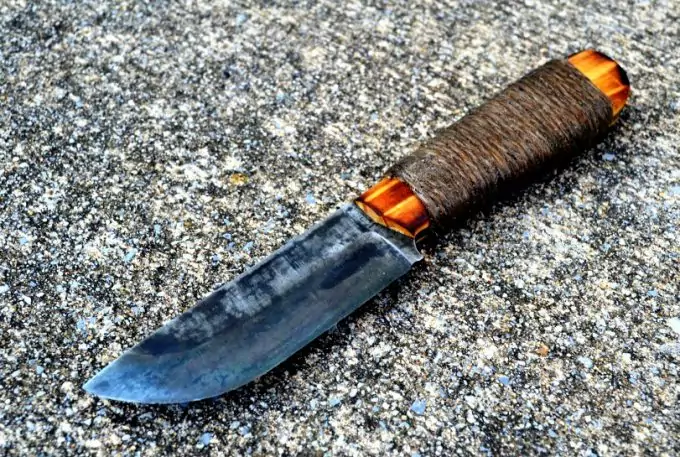
Flint and obsidian were the stones most commonly used in primitive knife making, as they were strong enough to cut, but brittle enough to chip away at and create a razor sharp edge. Unlike traditional metal knives, stone knives are not sharpened in the conventional sense, but rather chipped at with another hard material to create a sharp “broken” edge”.
To get started, you’ll want to find something to use for a handle. Traditionally, antler and bone was often used, but you can also use a sturdy piece of wood. Just make sure it’s green, so that as it dries, the handle will shrink around the tang of the blade, forming a snug fit.
However, the process of creating a hollow and securing the blade in the handle of one of these materials can be quite difficult, and often requires some sort of adhesive.
The more traditional survival method involves making your knife out of one solid piece of material, and then wrapping the handle end of it with softened hide for a comfortable grip. These knives are not only sturdy, but truly beautiful in their simplicity.
Then, using a large, rounded stone, you can break chips away from a piece of obsidian or flint to create your sharp edge. Be wary of flying pieces of stone as you begin this process though-a shard of obsidian in your eye isn’t going to feel too good.
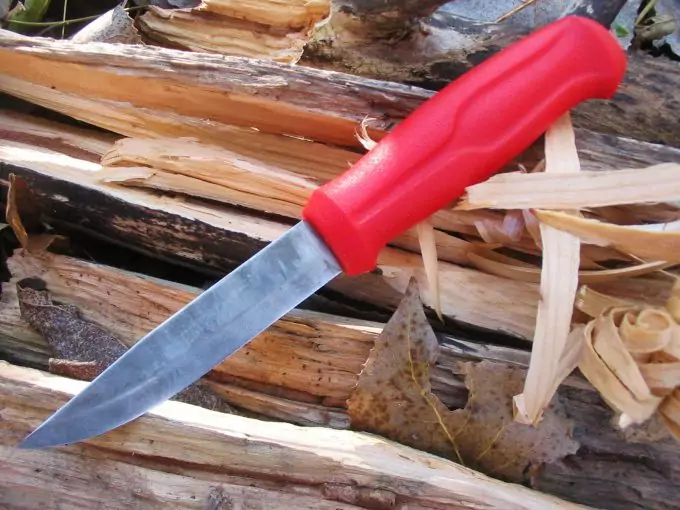
The practice of flintknapping is one that is rarely done anymore, and it can be difficult to find information on the finer points of the practice. However, experience is definitely the best teacher, and this is something you can largely learn on your own. Just know how to identify the stone you’ll need, and begin practicing with striking the material, learning how it reacts to the various angles and power behind the blows.
We have a great tutorial on how make a knife of your own where we teach you the process step-by-step.
Knife kits
If primitive knife making isn’t really your cup of tea, there are lots of other DIYers in the same boat. Make-your-own knife kits are readily available online now, and offer customers the chance to create a custom, beautiful knife, without spending hours striking rocks together.
The options are limitless in terms of materials and blade styles, and they even have gift sets for that special prepper in your life.
Knifekits.com offers a great selection, and their materials are really high quality. One of my favorite kits is the Bowie Knife Kit. It’s a really strong, sturdy blade made out of stainless steel that you can equip with a beautiful leather sheath, and the handle material of your choice.
This site even has a primitive series knife kit, for people that want the beautiful look of a primitive knife without all the hassle and flintknapping.
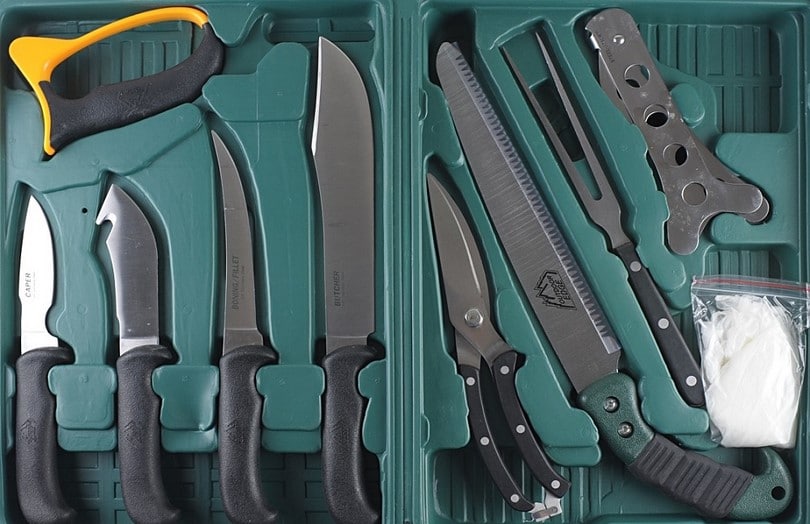
Whichever route you decide to go, knife kits are a great way to create a custom survival knife that meets exactly your needs.
Combination knives
With the growing popularity of the survival industry, there are invented numerous survival gadgets. What once used to be a single purpose blade has become the housing for a series of useful items, turning a standard survival knife into a multi-purpose tool.
Particularly common among clip and assist open knives, these multi-faceted survival knives come equipped with a number of tools you can use in the field. Here are a few eye-catching ones you can find for sale, and the numerous features they have to offer.
Power Tek Fire Talon Premium multi tool
This almost falls more into the category of multi-tool rather than survival knife, but in some cases they’re one in the same. Plus, this thing is so cool it’s hard not to feature in this article. Made of black oxidized stainless steel, it’s super durable, and has rubber grips inlaid to the handle. It’s well built, and even comes with a 30 day money back guarantee. Its numerous features include:
- Two LED flashlights
- Needle nose pliers
- Wire cutters
- Wire Strippers
- Scissors
- Combination blade knife
- Can opener
- Phillips screwdriver
- Flathead screwdriver
If you’re looking for a great knife to put in you Every Day Carry arsenal, this one fits the bill. The only drawback is that it’s a little on the bulky side. But the way I see it, if it’s heavy, then chances are it’s built to last, and me personally, that’s a sacrifice I’m willing to make.
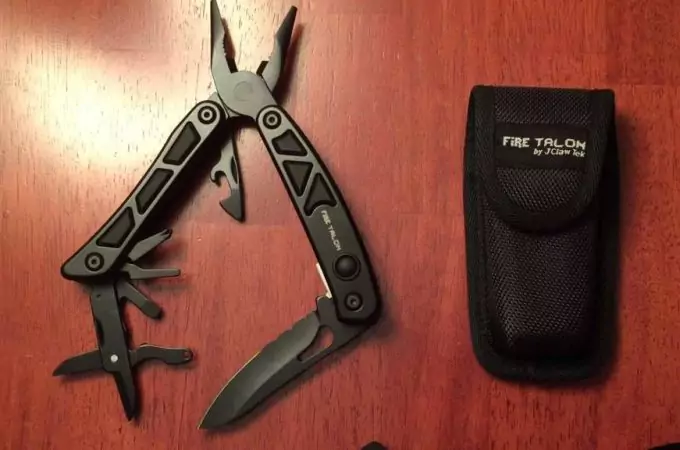
If you like this product you can find and buy it here.
KLOUD City 8-in-1 multi tool
Okay, one more multi tool. I mean come on, have you ever seen one of these with a combination hatchet/hammer on it? Me neither. This thing takes the term survival knife to the next level, with features that you won’t see on any other gadget:
- Hatchet
- Hammer
- Pliers
- Wire stripper
- Can opener
- File
- Phillips head screwdriver
- Mini-saw
- Serrated blade
- Spear point blade
What I really love about this multi-tool is that it particularly has a variety of cutting utensils to handle different tasks. With two serrated blades for cutting through tough materials, a standard spear point for slicing, and a hatchet for tougher tasks, it’s well suited for your wilderness bug out bag. Plus, at just over six inches, it’s really not as bulky as you might think.
If you like this product you can find and check its price here.
5-in-1 Survivor Tech knife
This is one I actually have in one of my bug out bags. While it’s not loaded with crazy amounts of features like the other ones, it has one tool that sets it apart from the rest-a magnesium fire starter.
It’s incredibly powerful, producing a shower of sparks with very little effort. Sure, it’s not easy to start a fire from sparks and fine tinder alone, but it’s a great way to practice, and a hell of a skill to have under your belt. Other features of this survival knife include:
- Flashlight
- Window breaker
- Seatbelt cutter
- Combination blade
As you can tell from these features, this tool is meant to be stored either on your person or in your car. The seatbelt cutter is designed to cut through the tough nylon in the event that you’re trapped in a car accident, and the window breaker is simply a heavy stainless steel nub that you can use to shatter passenger windows.
This folding style knife has a clip, so you can wear it on your pocket or belt easily too. Just be wary of the land of lost knives.
If you like this product you can find and purchase it on Amazon.
Amazon jungle survival knife
This knife takes a different approach to multiple functions. It’s a saw backed beveled blade with a hollow handle wrapped in paracord that stores an arsenal of handy supplies:
- Fishing line
- Fishing hook
- Matches
- Striking paper
- Compass
- Needles and thread
- Safety pin
This knife lacks some of the rugged frills of the other multi-tools, but has a lot of really great basics stored right in the handle. It also comes with a nylon sheath, making it easy to attach it to the outside of a backpack. It’s a really cool concept, with a nice big blade, but keep in mind that with a hollow handle it’s not the sturdiest survival knife.
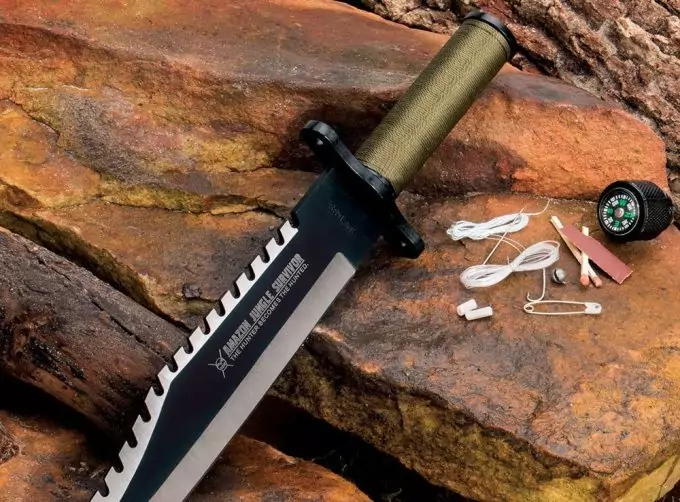
If you like this product you can find and buy it on Amazon.
The hardest knives to lose
If there’s one thing I know about knives, it’s how easy they are to lose. If you do a lot of hiking over rugged terrain, you’ve no doubt encountered the problem of clip knives getting pushed up out of your pockets and lost in the vast expanse of brush and pine needles.
While most knives are designed to be clipped to your pocket or belt, in my experience these are about the easiest ones to lose. Here are a few designs that make your survival knife a little easier to hang onto.
Neck knives. This is a concept I hadn’t heard of until I went out in an active search for a knife that didn’t clip to my waist. Neck knives are not only a great way to keep your knife from falling out of a pocket during an active hike, but they allow you to keep self protection very close by, without anyone else being the wiser.
Typically they’re designed as a solid, relatively flat blade and tang, without a handle to keep a low, smooth profile. They come with a leather or vinyl sheath that has an internal compartment that locks the blade into place. Some of them come with ball chain though, which isn’t the most reliable.
Since they rely on tension to keep them closed, if the chain bunches up around your neck, they easily come undone, and poof, you’ve lost another knife. I recommend replacing the chain with paracord knotted securely-it’s much more reliable and a lot more comfortable too.
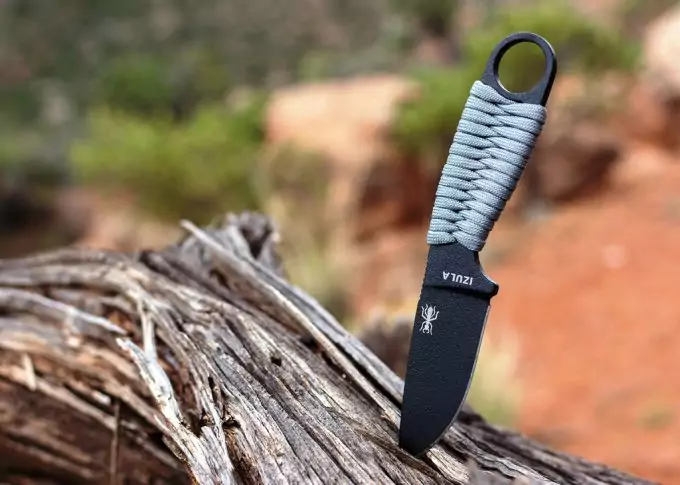
Sheath with belt loop. As we discussed earlier, larger knives like the Bowie often come with leather sheathes to protect the blade. The plus side of this design is that they often have a belt loop cut into the sheath itself.
With a belt secured through this loop, unless you take your belt off in the middle of the woods, that knife isn’t going anywhere. Plus, typically a well made leather knife sheath has a strap to hold the knife in place. This knife wraps around the handle, applying downward pressure to keep the knife from sliding up and out of the sheath.
Knives for self defense
Let’s take a step into the more sinister side of survival knives. The fact is, there may come a time when you need to defend yourself, and though a knife may be a macabre and gruesome way to do so, it could very well save your life. So though it may be an unpleasant thought, it’s worth considering to look into purchasing a knife or two that’s particularly designed for combat. Here are a few of the blades you’ll find on the market in this category:
- Throwing knives- Typically a knife with a very thin, somewhat long, double-edged blade. We have an interesting set of reviews in this article if you want to know more about this type of knives.
- Karambit- A curved blade knife, often with a partially serrated edge
- Daggers- Fixed blade knives, typically double edged
There are a lot of other styles of combat knives out there. Depending on your physical capabilities and comfort levels, you’ll want to select one that you will be competent to use on an attacker. Some are more for tactical situations, and don’t apply as much to the average civilian’s typical needs.
Sharpening and maintenance
If you’re going to get serious about your survival knives and put some money into them, it really pays to know how to sharpen and maintain the blades. While it’s a simple enough skill to learn, there’s a certain finesse and rhythm to it that really takes time to perfect.
However, once you get the technique down, it can be pretty hypnotic and relaxing to sit by the fire and sharpen your knife.
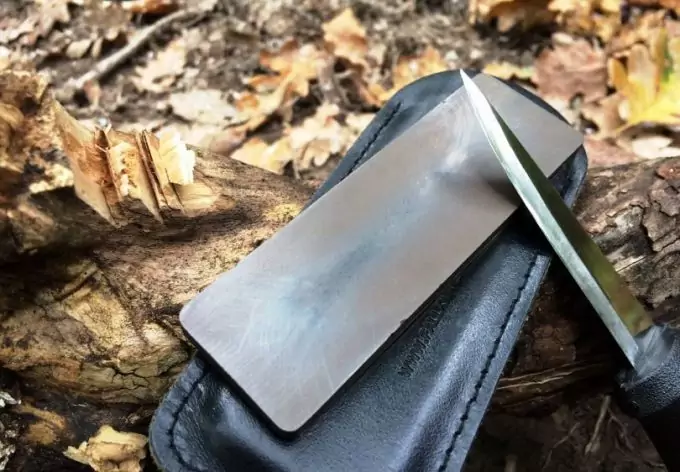
If you plan to get knives that are built to last, make sure to buy ones that have thick blades. As you sharpen a knife, you’re actually grinding down the edge to make it thinner, which gives it its sharpness. Still, this is a delicate operation and if you don’t do it right, you may hurt the blade. To learn how to sharpen a knife, read our tutorial in this article.
To have somewhere to go with your sharpening, get a knife with a thicker blade. It will last much longer, and will be better suited to someone who is learning how to sharpen, and may grind more than is necessary off the edge.
There are many methods, but one of the oldest and simplest ways to sharpen a knife is by using a bastard file. These are large files generally, but you can get a smaller one that is easier to work with. However, having a few different sizes on hand is great-when you’re done with the knife, you can move on to the axe!
So once you have your bastard file, it’s as simple as grinding against the edge of the blade at an angle, working in fluid, firm strokes, only in one direction (filing in both will just grind the edge down, rather than sharpen). Once you’ve worked over one side of the blade, switch to the other, gently filing in one direction again.
After getting both sides of the blade well filed, you need to get the small metal burs off the blade (the bits of metal that rubbed off in the filing process). I usually use a soft, slightly porous piece of wood. Rub it gently down the length of the blade, but not across the edge. This should remove all of the very sharp metal shavings.
If you have a smaller knife, you may consider sharpening instead with a whet stone. This is a more gentle and gradual method, and doesn’t take off as much of the edge at once-great for thing blades. Whet stones have a coarse grit and a fine grit side. Start on the coarse side, with the stone on a wet towel on a table to keep it from sliding around.
With the blade facing away from you, hold it at a very acute angle (technically it’s supposed to be 22 ½ degrees), and while applying firm pressure, push the blade forward for at least a dozen strokes.
Then, flip the stone to the fine grit side, and repeat the process. Just like with the filing method, you’ll want to remove the metal particles. You can use the porous stick, or just grab a soft cloth. Some people also rinse the blade to remove finer metal particles (nothing stings like metal dust in your skin-make sure to get it all!).
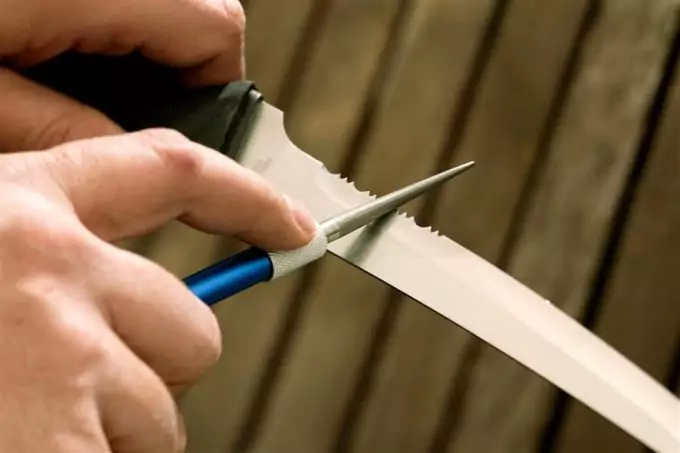
Knife restoration is a labor of love, and has a way of forging a deeper connection with the tools that we rely on so heavily. Sure, you can drop them off to a professional and pick them up after work, but there’s something to be said for the satisfaction of putting your own blood, sweat, and tears into a tool so critical to your survival.
Survival knives are no doubt awesome tools to shop for, and the features and gadgets that they can come with make them all the more desirable. Even antique and thrift stores are treasure troves of sturdy hunting and fishing knives that-with a little sharpening and TLC-can be restored to their former glory.
Whatever you do, make sure that every part of your day has a place to keep a knife, whether it’s in your glove compartment, a part of your every day carry, or a staple in your bug out bag. Where a rifle is the soldier’s best friend, a knife is the survivalist’s. Never go anywhere without one!

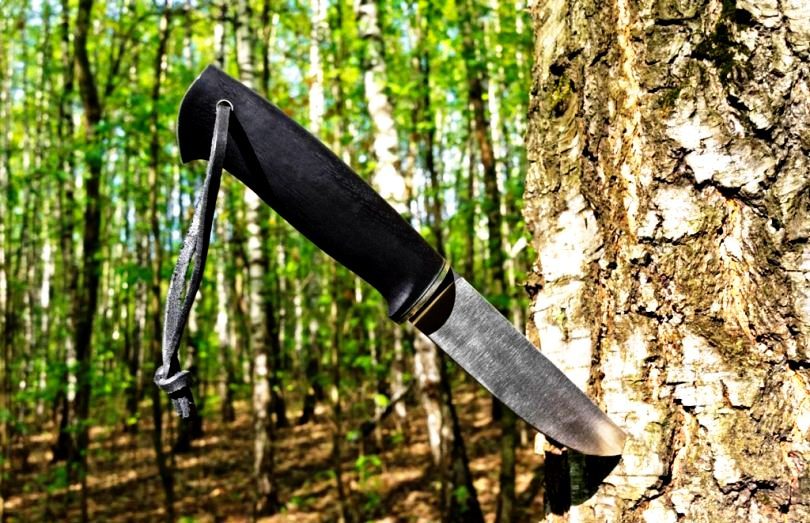
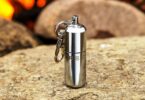

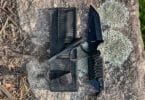
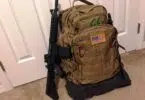
I think the best survival knife it is hunting knife. First, it is very big knife, so you can kill some dangerous predators. With small knifes you can’t do it, it is very hard. And of course, it needs to be sharpened.
And it’s desirable to have dark knife, because it will be more difficult for predators to find you in forest.
Hunting knives are indeed big, but for a survival situation they may prove too big. You need a sturdy, reliable knife that can be easily carried at all times without feeling its weight.
Now I want one. They look so badass. I have carried my Victorinox Swiss pocket knife for years and it has never let me down. They’re perfect for backpacking but bigger knives look like they’ll get things done smoother and faster. Sometimes foldable knives are hard to grip because some of them are too small (not my Victorinox!)
Your choice of a survival/tactical knife does always depend on how you plan to use the knife. For instance, you can use a Bowie knife for hunting and a tactical folder for self-defense.
I like the diversity of knife kits, you never find yourself in the same situation. I’ve always preferred going with a set, which includes a variety of knives than with a single knife purchase. Also, if you need to spare some space on your trips you can vote for the Swiss Army knife. It is a pocket knife and multi-tool at the same time, it doesn’t’ require much space and is easy to use.
If you prefer a survival knife kit, then make sure it stores in accessible handle and includes a lanyard for easy carry and convenience.